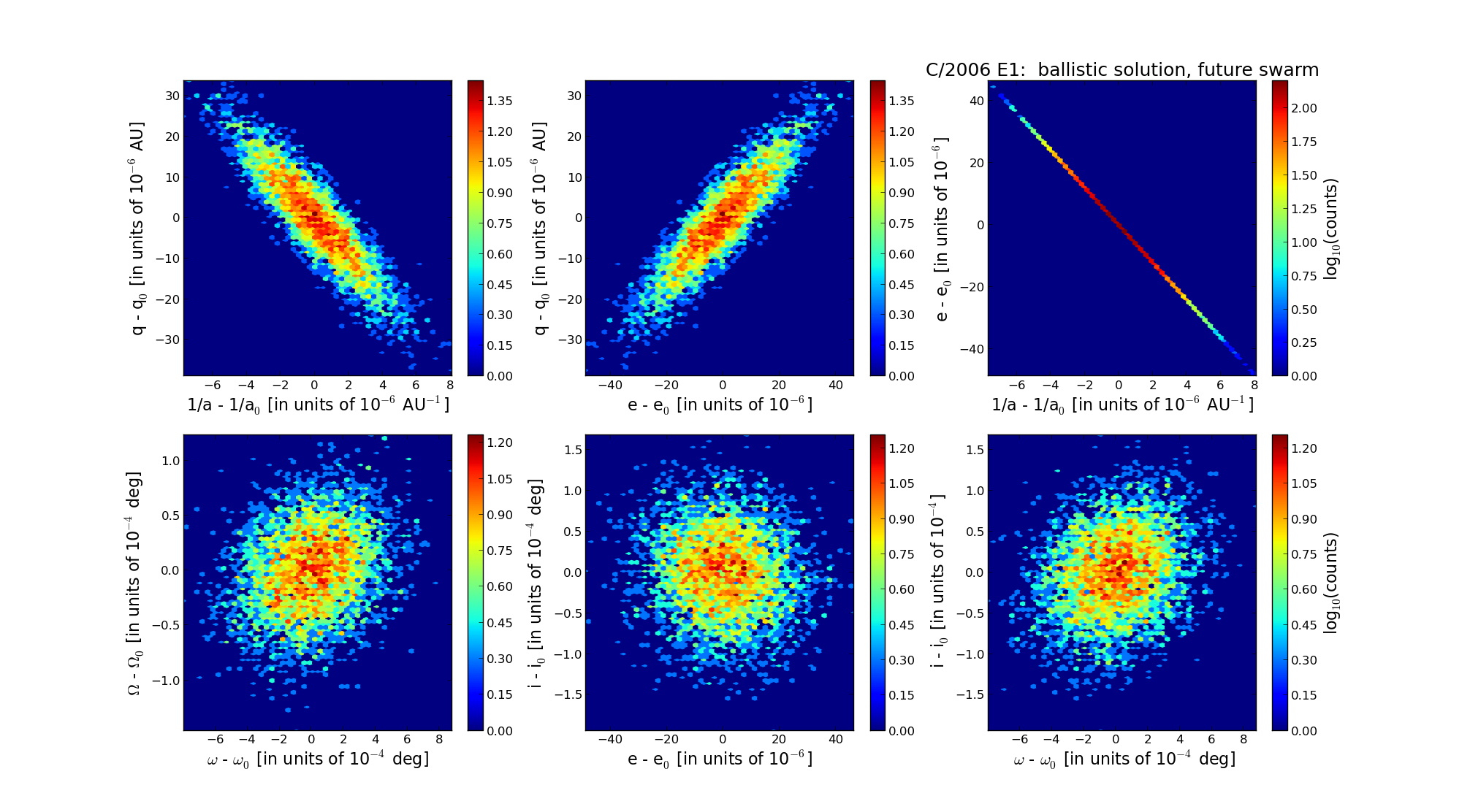C/2006 E1 McNaught
more info
C/2006 E1 was discovered on 11 March 2006 by Robert H. McNaught on the Siding Spring Survey images taken with the 0.5-m Uppsala Schmidt telescope [IAUC 8688, 2006 March 16]. After perihelion passage in January 2007, it was ocassionally observed starting from 26 January 2008 until 3 March 2009 (see figure).
This comet made its closest approach to the Earth on 3 July 2006 (5.382 au), six months before perihelion.
Solution given here is based on data spanning over 3.0 yr in a range of heliocentric distances: 6.39 au – 6.041 au (perihelion) – 8.07 au.
This Oort spike comet suffers small planetary perturbations during its passage through the planetary system that lead to escape of the comet from the solar system on hiperbolic orbit (see future barycentric orbit).
See also Królikowska 2014 and Królikowska and Dybczyński 2017.
This comet made its closest approach to the Earth on 3 July 2006 (5.382 au), six months before perihelion.
Solution given here is based on data spanning over 3.0 yr in a range of heliocentric distances: 6.39 au – 6.041 au (perihelion) – 8.07 au.
This Oort spike comet suffers small planetary perturbations during its passage through the planetary system that lead to escape of the comet from the solar system on hiperbolic orbit (see future barycentric orbit).
See also Królikowska 2014 and Królikowska and Dybczyński 2017.
| solution description | ||
|---|---|---|
| number of observations | 143 | |
| data interval | 2006 03 11 – 2009 03 03 | |
| data type | perihelion within the observation arc (FULL) | |
| data arc selection | entire data set (STD) | |
| range of heliocentric distances | 6.39 au – 6.04 au (perihelion) – 8.07 au | |
| detectability of NG effects in the comet's motion | NG effects not determinable | |
| type of model of motion | GR - gravitational orbit | |
| data weighting | YES | |
| number of residuals | 282 | |
| RMS [arcseconds] | 0.65 | |
| orbit quality class | 1a | |
| orbital elements (barycentric ecliptic J2000) | ||
|---|---|---|
| Epoch | 2313 06 25 | |
| perihelion date | 2007 01 06.08193200 | ± 0.00279300 |
| perihelion distance [au] | 6.03851059 | ± 0.00001093 |
| eccentricity | 1.00026161 | ± 0.00001350 |
| argument of perihelion [°] | 232.757255 | ± 0.000230 |
| ascending node [°] | 95.076335 | ± 0.000036 |
| inclination [°] | 83.187785 | ± 0.000048 |
| reciprocal semi-major axis [10-6 au-1] | -43.32 | ± 2.24 |
| file containing 5001 VCs swarm |
|---|
| 2006e1a2.bpl |

